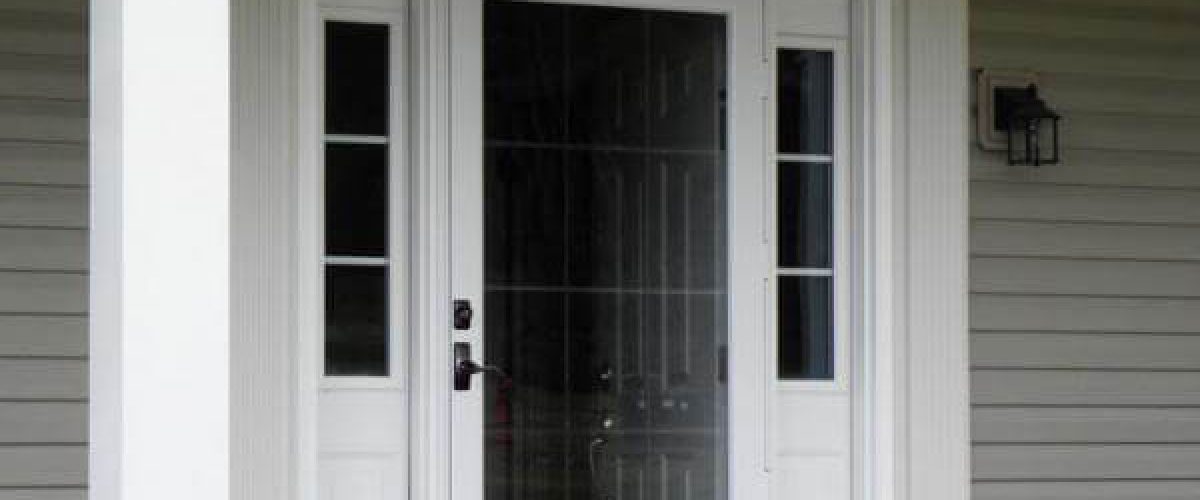A storm door protects an exterior door from harsh weather and provides a house with ventilation. Pre-hung doors are sold in kits that are easy to install.
Here are some things to consider to help you choose the right storm door for your home.
- Storm doors typically have front and back layers with foam insulation in the center. If you are concerned about security, look for a door with protective grilles, laminated security glass, and a multipoint locking system.
- Storm doors are generally 32 inches wide for back doors and 36 inches wide for front doors. They can usually be adjusted slightly to fit on top of a door frame.
- Measure your door frame’s height and width carefully. Measure the width at the top, center, and bottom between the exterior brick mold trim, not the inner door jamb.
- Before you install your storm door, inspect the wood jamb and trim around the opening. The outer casing needs to be solid to support the weight of the storm door. Use a level to check that the door frame is plumb and the top is level. You can also use a Z-bar extender to square an opening.
- Door manufacturers generally include all hardware necessary for installation. Any storm door can be hinged to the left or right.
- Storm doors come with a variety of combinations of glass and screen panels. Many have removable panels that you can change with the seasons. Most storm doors have a sweep along the bottom that consists of one or more flexible strips that keep moisture, dirt, and outside air out of the house.
- Storm door frames are available in full-view, mid-view, and high-view designs. Full-view doors come with several glass options, including beveled and waterfall. You can also choose to have blinds between the glass panes. You can choose Low-E high performance glass that is more energy-efficient than standard glass. Storm doors come in a variety of colors and finishes.
- You can also choose from several screen options. A full-view screen has separate glass and screen panels that can be switched. A retractable screen is hidden in the top of the door when not in use. Standard screens are fixed and have glass panels that slide up and down.
- If your storm door is in a location that is exposed to direct sunlight, change to a screen in early spring and put the glass panel back in late fall. The glass panel can act like a greenhouse and heat up the space between the inner and storm doors. This can make weather stripping deteriorate quickly and warp metal doors in extreme cases.
- When you are choosing replacement screens, consider the compatibility of the metal screens with the metal of your door. Some metals will corrode if they are in contact with each other.
- Galvanized steel screens are the least expensive and resist holes and tears, but the coating can wear off. Spray it with a household lubricant once a year to prevent rust.
- Aluminum screens resist corrosion, except in areas near saltwater, but they are not as strong as galvanized steel. Aluminum can darken from heavy smog. You can protect an aluminum screen with a commercial spray.
- Bronze screens are the most durable and the most expensive. A thin coat of varnish can protect the screen from corrosion. Paint or spray the screen every few years.
- Fiberglass screens are easy to install and resist corrosion. Fiberglass is a practical choice if a metal screen deteriorates.
- Storm doors generally have a closer or door stop to control how far the door will open. A door stop, or snubber, has a chain attached to a spring. A pneumatic closer keeps a door from opening too fast or too far and closes it slowly and firmly. Doors generally have one pneumatic closer, but some have two, or a second one can be added. A sliding washer can be used to hold the door open.

